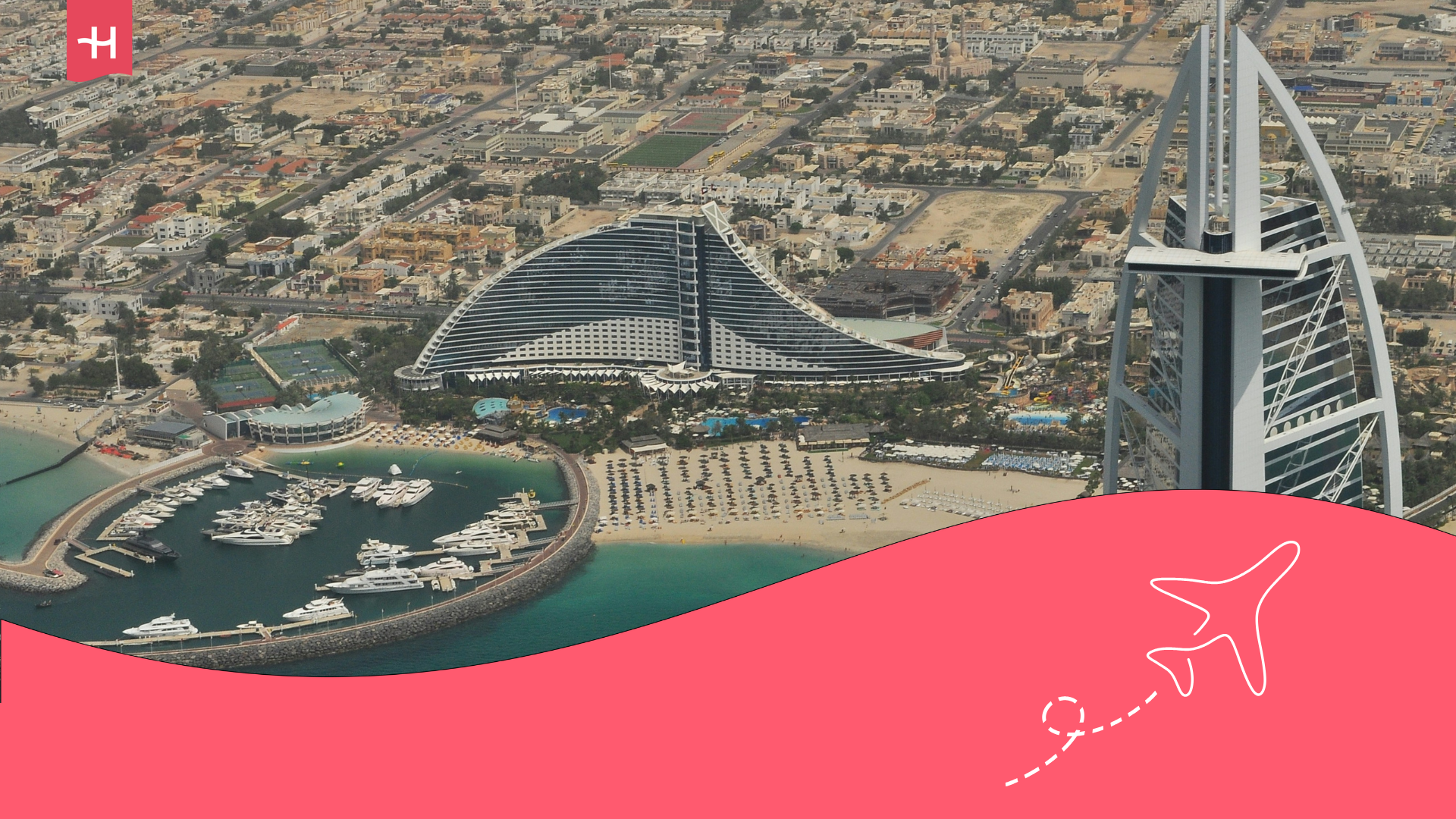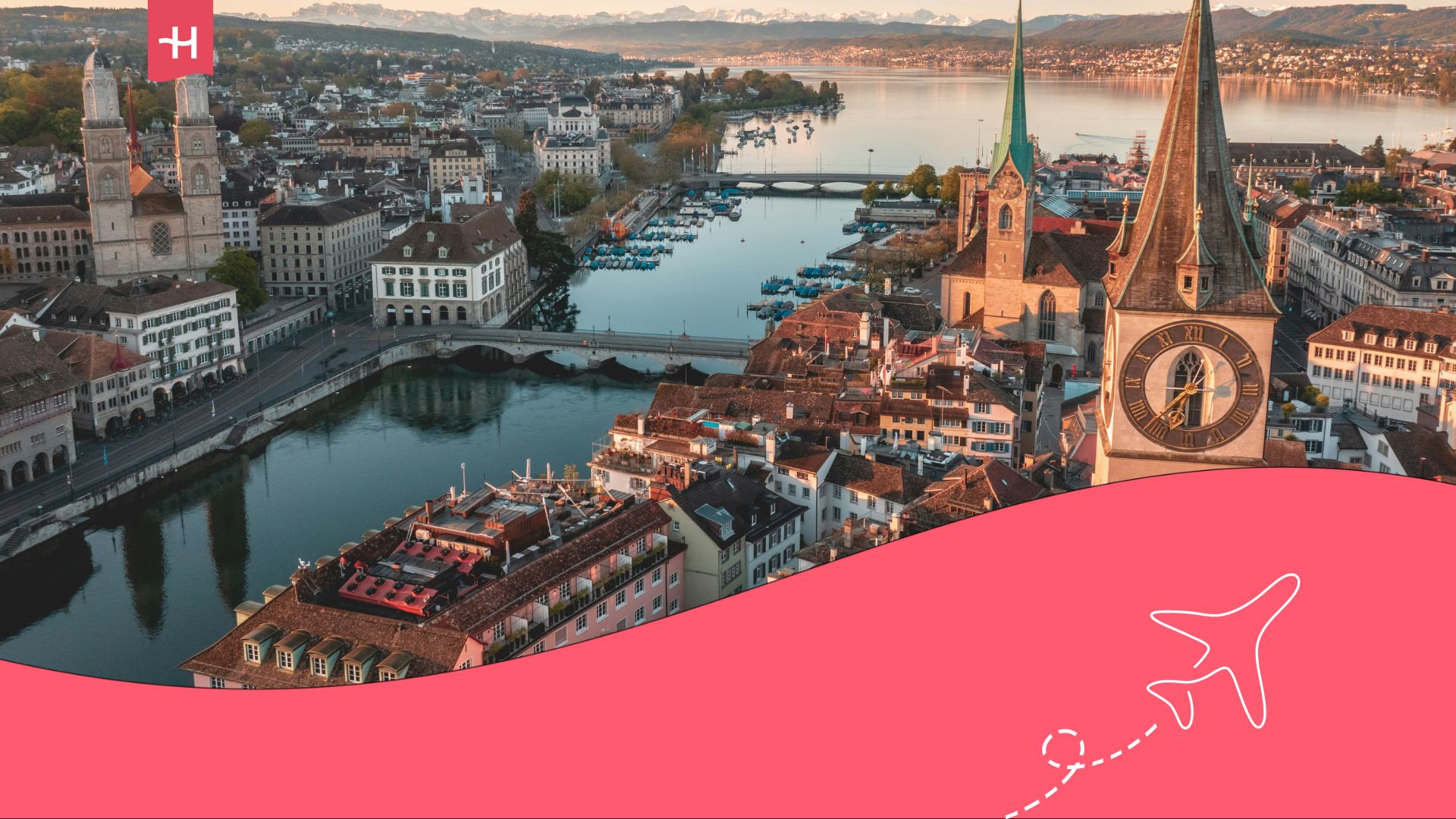Best neighborhood to stay in Paris as a digital nomad
Moving to the French capital? Discover the best neighborhoods to stay in Paris to help you settle into this vibrant and bustling city.
When we talk about the best neighborhoods to stay in Paris, we picture a city that perfectly blends history, art, and modernity. Known as the “City of Light,” Paris enchants not only visitors but also those who choose to stay longer to study, work, or simply experience something new. However, choosing the right neighborhood is essential for making the most of your stay.
Today, we’ll take a tour of the French capital, analysing its different neighbourhoods or areas to determine which ones are most recommended for foreigners looking to settle there. We’ll tell you which neighbourhoods stand out for their atmosphere, safety, cultural offer, and transport connections. This way, you’ll have a complete guide to choosing the place that best suits your lifestyle and making the most of your stay in this beautiful city.
What are the top three neighbourhoods in the French capital?
Before choosing a neighbourhood, it’s worth understanding how the French capital is organised. Paris is divided into 20 administrative districts that spiral out from the centre to the outskirts. Each district has its own character: some are known for their history, others for their bohemian atmosphere, while some areas are associated with modern and cosmopolitan life.
In addition to this division, Parisian neighbourhoods are often classified by their lifestyles. You’ll find quiet residential areas, perfect for families; areas full of cafés, coworking spaces, and nightlife, which are highly sought after by digital nomads and students; and luxury sectors with boutiques and museums that attract those looking for the most exclusive in the city.
Understanding this organisation will help you get your bearings and identify which district fits your needs. Below, we’ll review the three most recommended neighbourhoods for living in Paris and what makes each one special.
1- Le Marais (Districts III and IV)
Located in the heart of Paris, Le Marais is one of the most sought-after neighbourhoods to live in. It’s well connected by metro lines 1 and 11, allowing you to reach iconic places like the Louvre or Île de la Cité in just a few minutes.
In terms of services, Le Marais offers excellent infrastructure: supermarkets, banks, pharmacies, and schools are within walking distance. It’s also close to universities and art schools, making it attractive to students and creatives.
Safety is good, with well-lit streets and plenty of activity at almost any time of day. The entertainment offer is top-notch: museums, art galleries, cafés, bars, and design stores coexist in a vibrant environment. Traffic is lower than in other central areas, and many streets are pedestrianised, which improves air quality and cleanliness in the neighbourhood.
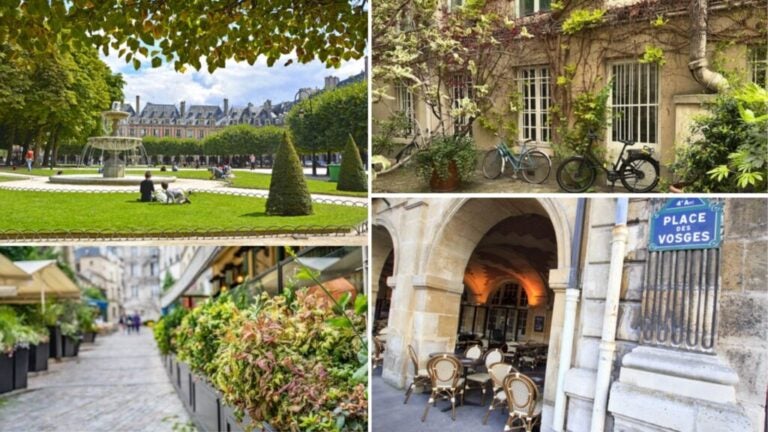
2- Saint-Germain-des-Prés (District VI)
This neighbourhood on the left bank of the Seine is synonymous with elegance and cultural life. Its connection to the rest of the city is excellent thanks to metro lines 4 and 10, which link it in minutes to key locations like Châtelet and Montparnasse.
Saint-Germain-des-Prés boasts first-class services: supermarkets, banks, historic bookstores, and prestigious schools. It’s also near universities like the Sorbonne, attracting students and academics.
Safety is high, as it’s a residential neighbourhood with a strong police presence. In terms of entertainment, there are many literary cafés, renowned restaurants, and fashion boutiques. The streets are usually very clean and well-maintained, though traffic can be dense during peak hours due to its tourist appeal.
3- Montmartre (District XVIII)
Montmartre combines a bohemian air with unique views of the city from the Sacré-Cœur basilica. It’s well connected to the centre by metro lines 2 and 12, though the journey may take a little longer compared to more central neighbourhoods.
In terms of services, Montmartre offers supermarkets, outdoor markets, banks, and schools, though it’s more of a residential neighbourhood than a university area. Safety is reasonable: it’s a popular spot for tourists, so it’s advisable to be cautious of pickpockets in crowded areas.
In terms of entertainment, Montmartre is ideal: theatres, cabarets, artistic cafés, and a constant cultural agenda give it a unique character. Its cobblestone streets are charming, though cleanliness varies by area. Traffic isn’t heavy, but its narrow, sloping streets make car mobility less comfortable.
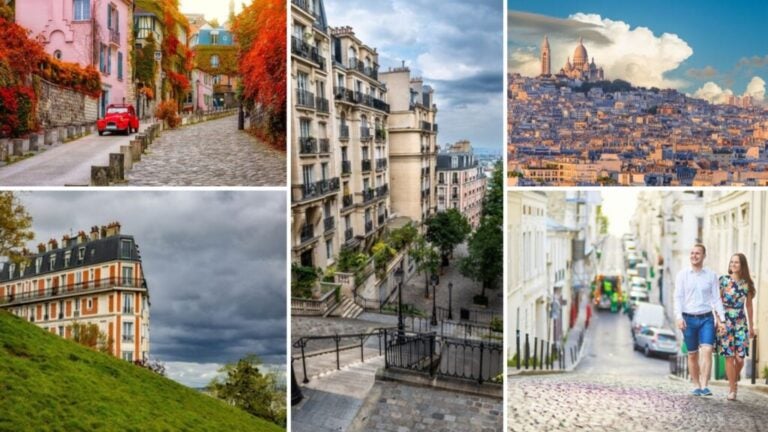
What are the best neighbourhoods in Paris for digital nomads?
Paris isn’t just about art, history, and gastronomy. In recent years, it has also established itself as a hub for digital nomads. The city offers a vast network of coworking spaces, cafés ready for working, and coliving options that make community living easier. That’s why choosing the right neighbourhood can make the difference between a comfortable and productive experience or a complicated stay. Here, we’ll tell you which neighbourhoods are most recommended for digital nomads and what specific spaces you’ll find in each one.
Bastille (District XI)
Bastille is synonymous with youthful energy and cultural life. Its good connection to the rest of the city (metro lines 1, 5, and 8) makes it a strategic spot for those who need to move quickly.
- Recommended coworking spaces: Remix Coworking Bastille and Patchwork Coworking are two of the most popular among creatives and entrepreneurs.
- Cafés with WiFi: Places like Café de l’Industrie or Coutume Café are ideal for working with a laptop without feeling out of place.
- Coliving: The Colonies Bastille space offers private rooms and common areas designed to share with other young professionals.
Moreover, safety is good and entertainment is guaranteed: international restaurants, cocktail bars, and alternative theatres make it a perfect neighbourhood for those looking for daytime productivity and nighttime fun.
Canal Saint-Martin (Districts X and XI)
With its bohemian and creative vibe, Canal Saint-Martin is a favourite among freelancers and startups. It’s well connected by metro lines 3, 5, 7, and 9, making it easy to get to the city centre.
- Recommended coworking spaces: Le Tank and Hubsy Arts et Métiers are two highly rated spaces for their collaborative atmosphere.
- Cafés with WiFi: Anticafé République and Ten Belles are classic spots where you can work comfortably with a good connection and relaxed atmosphere.
- Coliving: The Babel Community in République, just minutes from the canal, is a modern option for those who prefer to stay in a community.
Here, safety is reasonable, the streets are clean, and the young, multicultural atmosphere favours integration. It’s a less touristy neighbourhood compared to others, giving it a more authentic and tranquil feel for living.
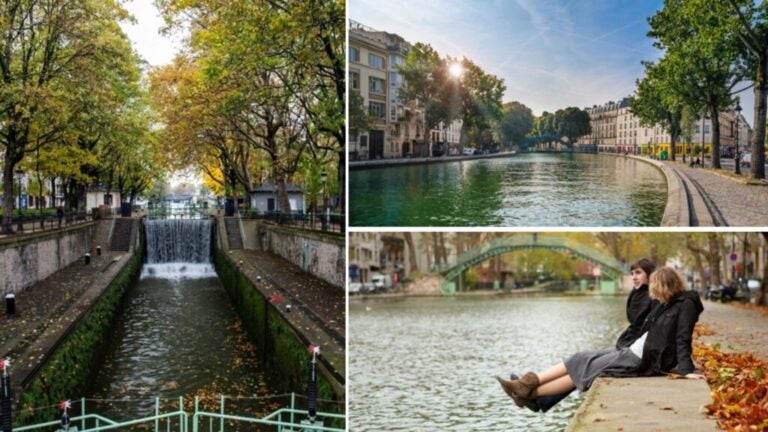
La Défense (Business District, West Paris)
La Défense is the modern district of Paris, with skyscrapers, offices, and a growing digital ecosystem. Its connection is flawless: in less than 10 minutes, you’ll be at the Arc de Triomphe thanks to metro line 1 or the RER A.
- Recommended coworking spaces: Spaces La Défense and WeWork La Défense offer modern facilities, meeting rooms, and international-level networking.
- Cafés with WiFi: Chains like Starbucks Esplanade or Pret A Manger are common in the area, designed for executives and remote workers.
- Coliving: Kley La Défense is an alternative for those seeking modern accommodation, with shared areas and inclusive services.
Safety is very high, internet is top-notch, and the whole district is designed for work. However, being a business area, it may lack the bohemian charm of Bastille or Canal Saint-Martin, although it compensates with high-level amenities.
Connectivity in Paris with Holafly Plans
As a digital nomad, you surely understand the importance of having a good internet connection at all times. Paris is a city with excellent digital infrastructure, and to make the most of it, there’s nothing better than Holafly Plans.
This innovative service allows you to get an unlimited data plan for Paris, the rest of France, and over 160countries worldwide. If you frequently cross borders, this is a great advantage since you won’t need to buy a new SIM card every time you arrive in a new country. The cost? €67.90 ($73) per month, or €50.50 ($55) per month if you subscribe to the annual plan.
Important: If you are a frequent traveler and want to stay connected without worrying about expensive roaming or looking for a new SIM at every destination, Holafly’s subscription plans are for you. With a single eSIM, enjoy internet in more than 160 countries for a fixed price and no surprises on your bill. Travel without limits and connect easily and securely! 🚀🌍

What are the best neighbourhoods in Paris for students?
Did you know that Paris has around 700,000 international students, making it the city with the highest number of students in Europe? Every year, thousands of international students are drawn to prestigious institutions like the Sorbonne, Sciences Po, and the École Normale Supérieure.
For them, choosing the right neighbourhood to live in Paris is influenced by factors like proximity to university, rental prices, the youthful atmosphere, and access to libraries or cafés to study.
Quartier Latin (District V)
The Quartier Latin is the student heart of Paris and one of the most historic areas. It’s home to the Université de la Sorbonne, the École Normale Supérieure, and several faculties of Université Paris-Cité.
- Residences and coliving: Maison des Élèves de l’École Normale and modern colivings like Urban Campus Latin Quarter.
- Cafés to study: Le Rostand and Le Bonaparte are classics, always full of students with notes and laptops.
- Libraries: The Bibliothèque Sainte-Geneviève is iconic for those seeking an excellent academic atmosphere.
The neighbourhood is well connected to the centre by metro line 10 and the RER B. Safety is good, and the cultural life is intense: bookstores, art-house cinemas, and student bars mark the rhythm of the area.
Montparnasse (District XIV)
Montparnasse is another major university hub in Paris, with good connections to the rest of the city thanks to the train station and metro lines 4, 6, 12, and 13.
- Residences and colivings: Les Estudines Montparnasse and coliving spaces like The Babel Montparnasse.
- Cafés with WiFi: La Coupole and Le Dôme, historic meeting spots for artists and intellectuals, are still popular among students.
- Study spaces: Several public libraries, in addition to reading rooms in nearby universities.
The area is quieter than Quartier Latin, making it easier to concentrate. At the same time, it offers cinemas, theatres, and bookstores that enrich the cultural life. The streets are clean, traffic can be intense during peak hours, but the service infrastructure (supermarkets, banks, hospitals) is complete.

Cité Universitaire (District XIV)
The Cité Internationale Universitaire de Paris (CIUP) is a unique residential campus in Europe. Located in the southern part of the city, it’s connected by RER line B and metro line 4, providing easy access to the centre in just a few minutes.
- Residences: Over 40 houses and pavilions represent different countries; examples include the Maison de l’Argentine and the Maison des Étudiants Canadiens.
- Common areas: Reading rooms, auditoriums, sports facilities, and a large park that serves as a meeting point for students from all over the world.
- Atmosphere: Social cohesion is one of its strongest points, with a very active multicultural community.
Safety is high, the area is green and tranquil, and the services are tailored to university life. It’s ideal for those looking for a shared international experience.
So, which is the best neighbourhood to live in Paris?
Paris offers many attractive options depending on your profile: Historic neighbourhoods for students, bohemian areas for creatives, and modern districts for professionals. However, if we had to choose a single neighbourhood that combines quality of life, connectivity, multicultural atmosphere, and complete services, it would be the Quartier Latin.
The reason is clear: It’s the academic epicentre of the city, with prestigious universities, libraries, and cafés where studying or working becomes part of daily life. Its central location quickly connects you to any point in Paris, while also offering vibrant cultural life, safety, and nearby green spaces like the Luxembourg Gardens.
In short, if you’re looking for a neighbourhood that reflects the Parisian essence and allows you to enjoy both university life and the city’s cultural richness, Quartier Latin is the most complete option for living in Paris, no matter what your main activity is.
Frequently Asked Questions about the best neighbourhoods in Paris
The safest areas are Saint-Germain-des-Prés (VI), Le Marais (III and IV), and District XV. These neighbourhoods have low crime rates, constant police presence, and a well-maintained residential atmosphere. They also feature well-lit streets and high-quality services, making them very attractive for families and foreigners seeking peace and quiet.
The best-connected areas are Bastille (XI), Gare du Nord – Gare de l’Est (X and IX), and Montparnasse (XIV). These zones concentrate metro and train stations that connect to almost every point in the city and also to the rest of France and Europe. Living there means reduced commuting times and multiple public transport options at hand.
While Paris isn’t a cheap city, there are more affordable neighbourhoods like Belleville (XX), La Villette (XIX), and parts of Montreuil, a neighbouring commune to the east. Rental prices are typically lower than in the historic centre, while still offering access to basic services and good metro connectivity. These areas have a multicultural, youthful vibe, making them ideal for students or those looking for long stays on a budget.
In terms of green spaces, the most recommended ones are Boulogne – Bois de Boulogne (XVI), Buttes-Chaumont (XIX), and Jardin du Luxembourg in the Quartier Latin (V). These areas have large, well-maintained parks, perfect for those who value nature amidst urban life. Aside from improving air quality, they are ideal for sports, walking, or relaxing after a day of work or study.
The most vibrant neighbourhoods at night are Le Marais (III and IV), Bastille (XI), and Pigalle (IX and XVIII). They are full of bars, nightclubs, cafés with live music, and restaurants open late. Le Marais attracts an international crowd, Bastille concentrates the young scene, and Pigalle is famous for its cabarets and music clubs. If you’re looking for a lively neighbourhood, these three won’t disappoint.





 Language
Language 


















 No results found
No results found


